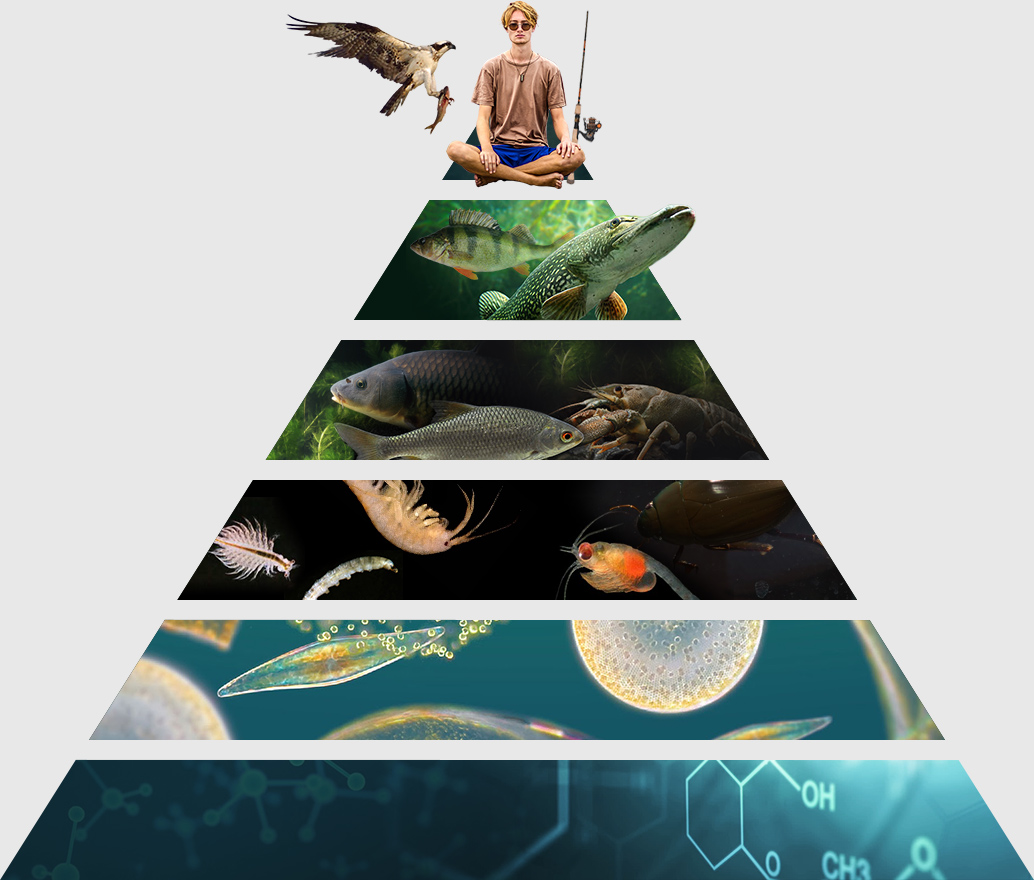Nutrients
The main nutrients necessary for the functioning of the ecosystem of the body of water are nitrogen and phosphorus. Microscopic algae and higher aquatic plants are used for primary production. Nitrogen and phosphorus can be found in water in free form – in inorganic nitrogen and phosphorus compounds (nitrites, nitrates, ammonium – nitrogen compounds; phosphates – phosphorus compounds), as well as in the form of organic matter or in microscopic algae – phytoplankton. The primary source of nitrogen in natural bodies of water is usually the fixed atmospheric nitrogen of blue algae. While the primary source of phosphorus in natural bodies of water – rain water, rocks in which a body of water is located. Since bodies of water in Latvia are considered to be affected by human activity, the majority of nutrients have anthropogenic origin.
Phytoplankton
Phytoplankton or microscopic algae play an important role in freshwater ecosystems. These algae are the primary producers – organisms that convert inorganic substances into organic ones. Thus, phytoplankton forms the first stage of the food chain. It is consumed mainly by zooplankton (microscopic crustaceans).
Zooplankton, zoobenthos
Zooplankton or microscopic crustaceans are an important component of aquatic ecosystems. Zooplankton feeds on phytoplankton. Zooplankton organisms are important food for all fish species.
Zoobenthos, an invertebrate animal inhabiting the lake bed, is an important element of aquatic ecosystems. These animals are characterised by a variety of feeding objects (zooplankton, phytoplankton, other invertebrates, etc.) and feeding mechanisms (filtering agents, predators, etc.), which indicate that they have a direct effect on the functioning of the water food chain. In addition, it is known that benthos is one of the most important feeding facilities for fish in Latvian and European lakes.
Peaceful fish
Fish that do not feed on other fish, but consume other organisms, such as zooplankton, zoobenthos, plants. Such fish are, for example, tench, roach, bream, silver bream.
Predatory fish
Fish, who at their adult stage mostly on other fish. Such fish are, for example, perch, zander, pike.
Human
Fishermen leave an impact on the lake’s food chain by catching fish.
Reference: Brönmark C., Hansson L. A. 2005., Vides risinājumu institūts, 2017. (Full version: Brönmark C., Hansson L. A. 2005. The biology of lakes and ponds. New York, Oxford University Press Inc.)

